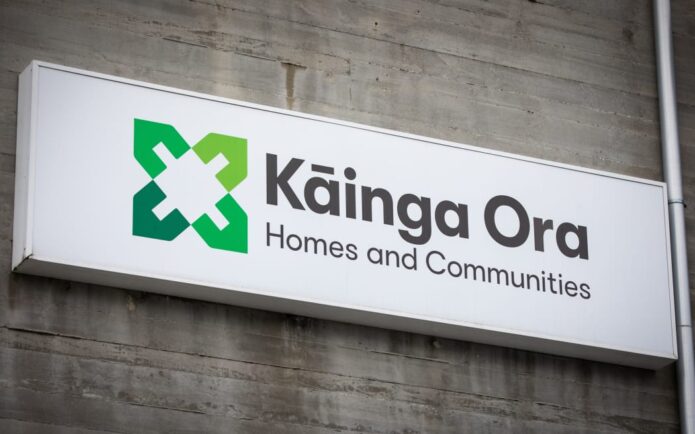PHOTO: Trade Me Property
As temperatures warmed up across the country in November, so did the New Zealand property market with the national average asking price rising 3.8 per cent on last year to $663,250, according to the latest Trade Me Property Price Index.
Head of Trade Me Property Nigel Jeffries said homeowners have plenty of reasons to celebrate this Christmas, as every region experienced a year-on-year increase and eight fetched record asking prices in November. The average number of views for properties in their first two days onsite was up a solid 12 per cent on last year too.
“The New Zealand property market is looking very healthy as we get set to wrap up the year. Property prices in Bay of Plenty, Canterbury, Hawke’s Bay, Nelson/Tasman, Otago, Southland, Waikato and Wellington all hit new highs.
“November was a big month for properties hitting the market but despite more stock, property prices still charged ahead. We saw 5 per cent more properties for sale than October and 4 per cent more than November last year with demand also continuing to remain very high.
“Looking ahead to the coming summer months, while the Reserve Bank has eased restrictions around loan-to-value ratios (LVRs) and interest rates remain low, we don’t expect these factors will have a significant impact on the property market. However, this will open the door for more first-home buyers to enter the market which is great news for those wanting to get a foot on the property ladder.”
Wellington property prices head north
“The average asking price in Wellington hit a new high for the third consecutive month in November, climbing 9.4 per cent on last year to $616,700 – that’s a $50,000 increase in 12 months,” he said.
Mr Jeffries said Wellington City, Lower Hutt and Upper Hutt all reached new records in November. “The average asking price in Wellington City hit $729,260, up 9.8 per cent on last year, while Lower Hutt and Upper Hutt came in at $568,550 (up 6.4 per cent) and $552,950 (up 8.9 per cent) respectively.
“The Wellington property market is yet to see the slowdown in growth that Auckland has experienced over the past 12 to 18 months. Prices in the capital have been steadily increasing since June 2016 and it looks set to stay that way for the foreseeable future.”
Supply is struggling to meet demand in the capital, and the number of properties for sale was down 7 per cent on November last year.
Auckland prices continue to slow
“Auckland’s average asking price continued to slow in November, rising just 0.5 per cent on last year to reach $943,400,” Mr Jeffries said.
“Asking prices were a mixed bag in November with Manukau City, North Shore City, Papakura, and Rodney all dipping on last November, while Auckland City, Franklin, and Waiheke Island all increased.”
Mr Jeffries said while prices in the region remain high, growth has been relatively subdued for the last 12-18 months the heat has come off the Auckland property market.
“There is some good news for buyers. The number of properties for sale in November was up 9 per cent on last year, giving buyers more to choose from. However, we’re still seeing strong demand and the average number of views for Auckland properties was up 17 per cent on November last year.
“While price growth is slowing, the average price for a small house (1-2 bedrooms) is on the rise in the region, after climbing 10.9 per cent year-on-year to $741,700 in November. The average asking price for a medium house remained the same as November last year, while large houses (5+ bedrooms) were down 5.6 per cent to $1,354,550.”
Waikato prices surge ahead
Mr Jeffries said the Waikato property market was running hot after the average asking price reached a new record for the third consecutive month, climbing 6.6 per cent on last November to $574,000.
“Property prices in the Waikato have been increasing rapidly since spring of 2015, when the average asking price was just $377,500.
“It’s not surprising that property prices in the Waikato are heading north as the ‘halo effect’ arising from its proximity to Auckland sees buyers look south as Auckland has grown more unaffordable.
“We’ve seen demand for property in the region climb recently, and the average number of views on listings in the Waikato was up 15 per cent on last year.
“The average asking price in Hamilton also hit a new high at $591,950 in November, up 7.7 per cent on last year with the average number of views on listings in the area up 14 per cent on last year,” he added.
Small houses the pick of the bunch
Mr Jeffries said small houses (1-2 bedrooms) are still the pick of the bunch for buyers especially in the main centres.
“The average asking price for small houses increased 9 per cent on last November to $460,100 and it seems some Kiwis are opting for smaller properties particularly in Auckland and Wellington. With rising house prices in the Capital and the Super City it’s not surprising that smaller properties are the hot favourite.”
Urban properties popular in Wellington
“Apartments, townhouses and units in Wellington were popular in November with the average asking price climbing 11.5 per cent year-on-year to $493,700. We’re seeing a lot of interest for urban properties in the capital as they are often in a better location, require less maintenance and the mortgage repayments are a little easier to swallow,” Mr Jeffries said.
-ends-
SOURCE: Media Release sent to Property Noise Group













